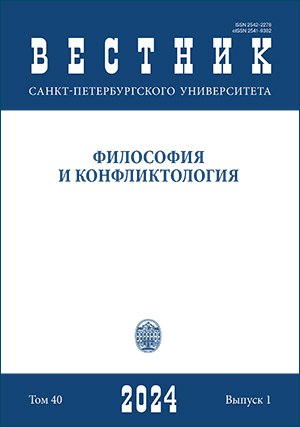Development of Methods for Studying the Image of Culture in the Digital Era
DOI:
https://doi.org/10.21638/spbu17.2024.111Аннотация
Развитие культуры в информационную эру обладает рядом специфических особенностей. Одна из основных — это влияние на развитие культуры современных информационно-коммуникационных технологий, что приводит к формированию новых смыслов и образов культуры. Она предстает перед нами как в реальном, традиционном воплощении, так и в новом — цифровом. Притом оба этих образа взаимосвязаны и зачастую являются двумя сторонами какого-либо культурного образа, явления или феномена. Повсеместное использование информационно-коммуникационных технологий в культурной сфере позволяет человеку реализовывать свой культуротворческий потенциал. В результате пространство культуры постепенно насыщается произведениями и объектами цифровой культуры, цифрового искусства. И такие объекты уже не имеют аналогов в реальном мире. Они выступают как самостоятельные культурные феномены и доминанты, порождая новые культурные смыслы. Поэтому эффективное и всестороннее изучение образов культуры возможно только с применением новых методов, основанных на использовании информационно-коммуникационных технологий, т. е. методов Digital Humanities. Методы Digital Humanities не только основаны на применении информационно-коммуникационных технологий, но и нацелены на использование в качестве эмпирической базы научных исследований информацию, представленную в цифровой форме на различного рода электронных сетевых ресурсах. Мы предлагаем несколько новых подходов к изучению культуры, применение которых позволяет более эффективно изучать современное первазивное социокультурное пространство. Эти методы и подходы используются как в проводимых авторами научных исследованиях, так и для изучения культуры студентами Санкт-Петербургского государственного университета. Развитие этих методов актуализирует изучение культуры в условиях первазивной социокультурной среды.
Ключевые слова:
цифровая эпоха, образ культуры, методы обучения, информационно-коммуникационные технологии, цифровые гуманитарные науки
Скачивания
Библиографические ссылки
References
Загрузки
Опубликован
Как цитировать
Выпуск
Раздел
Лицензия
Статьи журнала «Вестник Санкт-Петербургского университета. Философия и конфликтология» находятся в открытом доступе и распространяются в соответствии с условиями Лицензионного Договора с Санкт-Петербургским государственным университетом, который бесплатно предоставляет авторам неограниченное распространение и самостоятельное архивирование.






